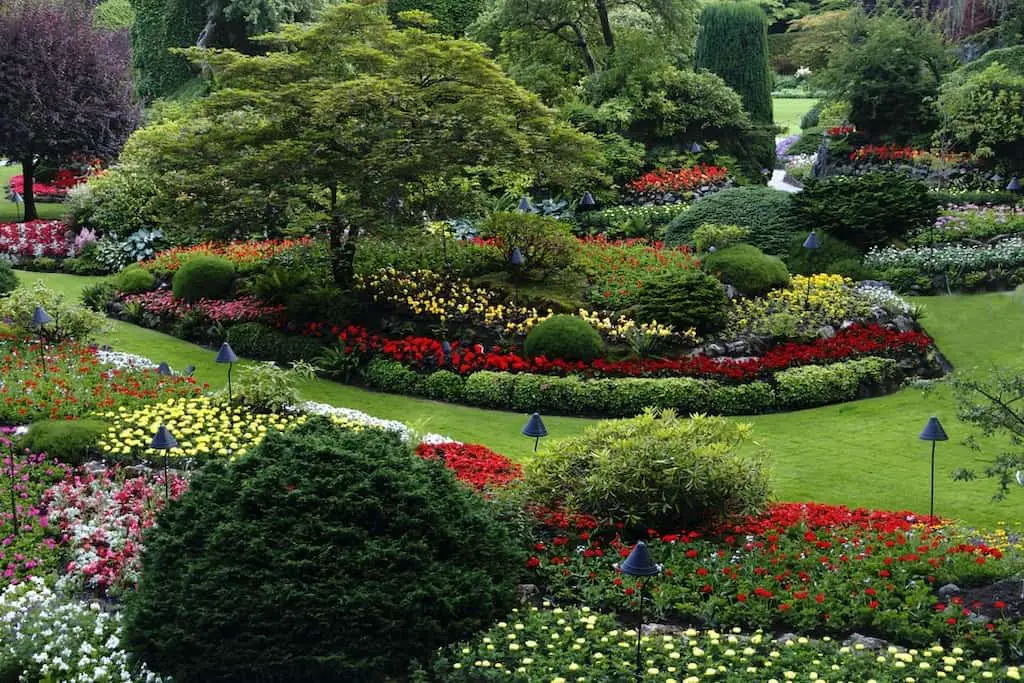A healthy organic flower garden, brimming with life, can be within your reach. Billions of microorganisms will be present within the soil, and pollinators of all varieties will call it home. If you want your very own organic paradise for butterflies, birds, and blooms alike, follow these simple pointers for assured success.
Table of Contents
Prepare Your Site for Planting
Healthy soil is alive with an out-of-this-world population of microorganisms. The old way of prepping our ground would have had us tilling, plowing, and chopping our soil, damaging many of these beneficial organisms. Research has indicated that layering our gardens with organic matter for the winter and then planting right into the layers will result in a much healthier soil structure overall.
No more tilling and breaking up the soil, instead use what they call the lasagna method of gardening. Just like creating a yummy pan of lasagna, you are layering organic materials, which over time, creates a very soft and fertile ground in which to plant.
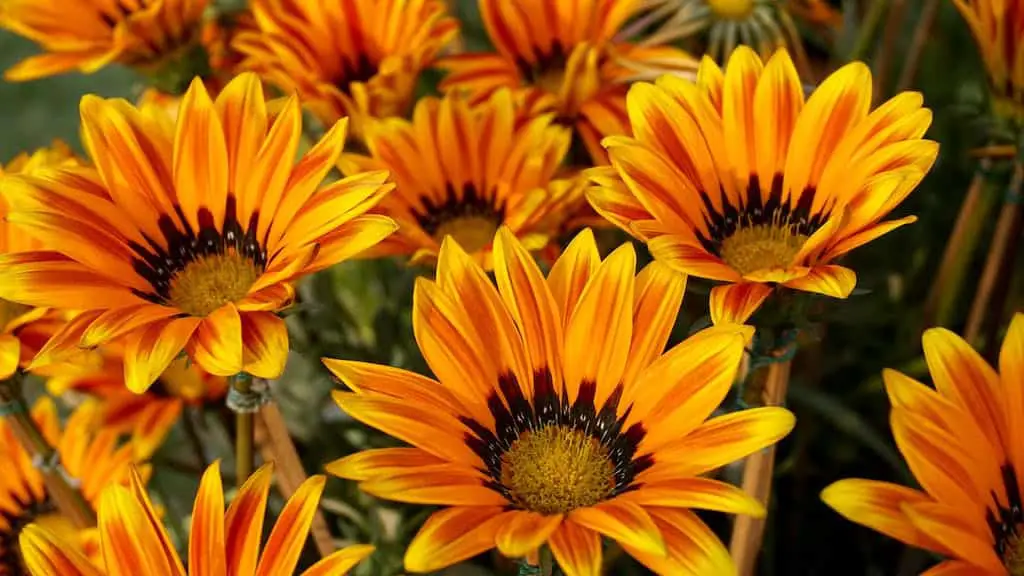
Where to Start
Existing Garden
The stage that your beds are currently at will determine how you approach this new method. If you have old, established flower beds with a manufactured weed barrier, you’ll want to remove the barrier, as this will only complicate your gardening over time. Instead, start to build up thin layers of multiple different materials to create your very own mini “lasagna” in-between your existing plants. Don’t pile deeply against the plants, which will only promote rot. Over time, as your surrounding soils improve, you will likely want to pull up the old plants, divide them and plant them back into the rich new blend that you have created.
New Garden
If you are starting a new bed where there was grass or other plants, you will want to build up many varying layers of organic material to smother the existing plants and plan to plant your flowers in about a year when things have decomposed a bit. You can always help the decomposition process by watering when the area gets dry and by applying some good quality, rich soil or aged compost over the top of your “lasagna.” Kind of like the cheese!.
Making Lasagna
You don’t want thick layers of any one type of material, and if you are covering vigorous plants and weeds, it will help to lay down a layer of cardboard to snuff out the existing unwanted plants. Then add a few inches of one nitrogen-rich material, a few inches of the next material, etc., until this “Lasagna” is as thick as you want it. The thicker, the better, but depending on your yard, you’ll probably want a minimum of maybe six to ten inches. Top it all off with some carbon-rich materials to discourage flies that may be drawn to the nitrogen materials. The layers and diversity of the materials are the keys to quick decomposition.
Remember, your “Lasagna” will shrink considerably over time, so don’t be afraid to pile it high at the end of the year. Next spring, it will be quite a bit lower.
- Carbon-rich materials include wood-based materials like paper, cardboard, leaves, twigs, wood chips, sawdust, etc. Think brown and relatively dry.
- Nitrogen-rich materials would include the more green and wet stuff like grass clippings, plant cuttings, fruit and vegetable scraps, aged manure, etc. It’s the stuff that will get stinky over time.
When spring does finally come to your area of the world, you will be ready to plant. It will be tough to resist the urge to till, but trust me that this garden soil will be the nicest that you have had the pleasure of planting into over time.
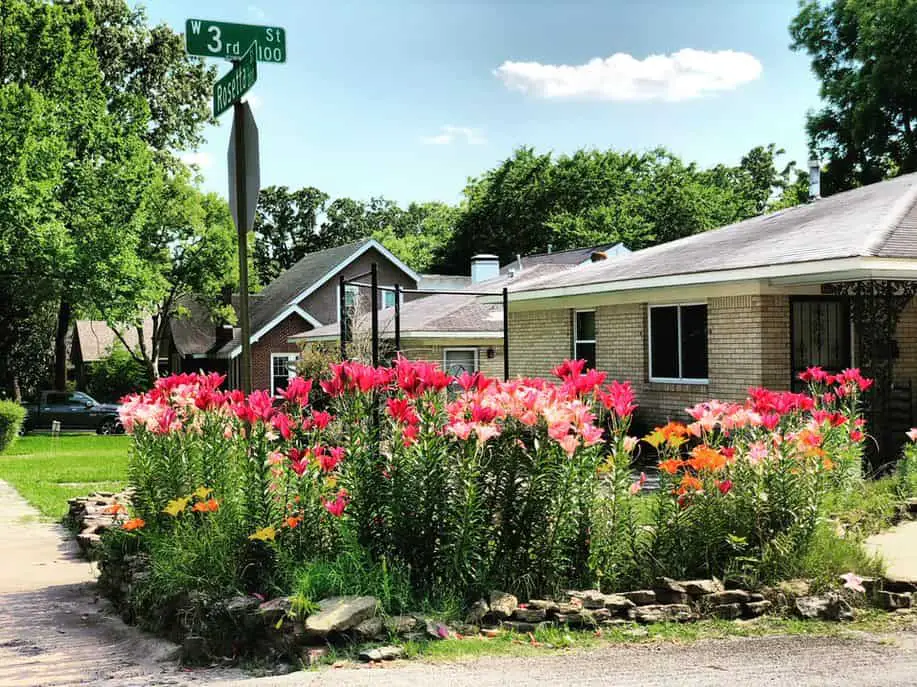
Plant Choices
Be sure to plant flowers well suited to your area’s light and moisture conditions. If you are planting perennials, be sure only to choose plants that are well suited to your planting zone. Resist the urge to push the limits; this will only result in frustration and more maintenance. If you are planting an annual garden, then all bets are off; you can go crazy and see what wild things you can get to grow, knowing that this one summer is all that you can hope to get. Then, at the end of the season, those annuals just become nitrogen-rich material for next year’s garden.
Sun or Shade Levels
Determine how many hours of sunshine your planting area receives every day so that when it is time to choose your plants, you choose the correct ones. Any plants that like full sun will need 6 to 8 hours of sunshine a day. Plants that prefer part sun can thrive in 4 to 6 hours of sunshine per day. A plant that likes partial shade will do well with only a few hours of direct sun per day, while the shade lovers want the shade with very little if any direct sun.
Plan Strategically
Decide if you want your flower garden to be formal with symmetrical groups of plants in neat and tidy groups, or if you prefer the more natural look where there is no clear pattern, and it looks like mother nature herself could have laid it out. Realize that the more formal look will require more care in planting and more care over time to maintain the specific look, while the informal, natural look will basically require you to plant it and leave it alone (other than weeding, of course).
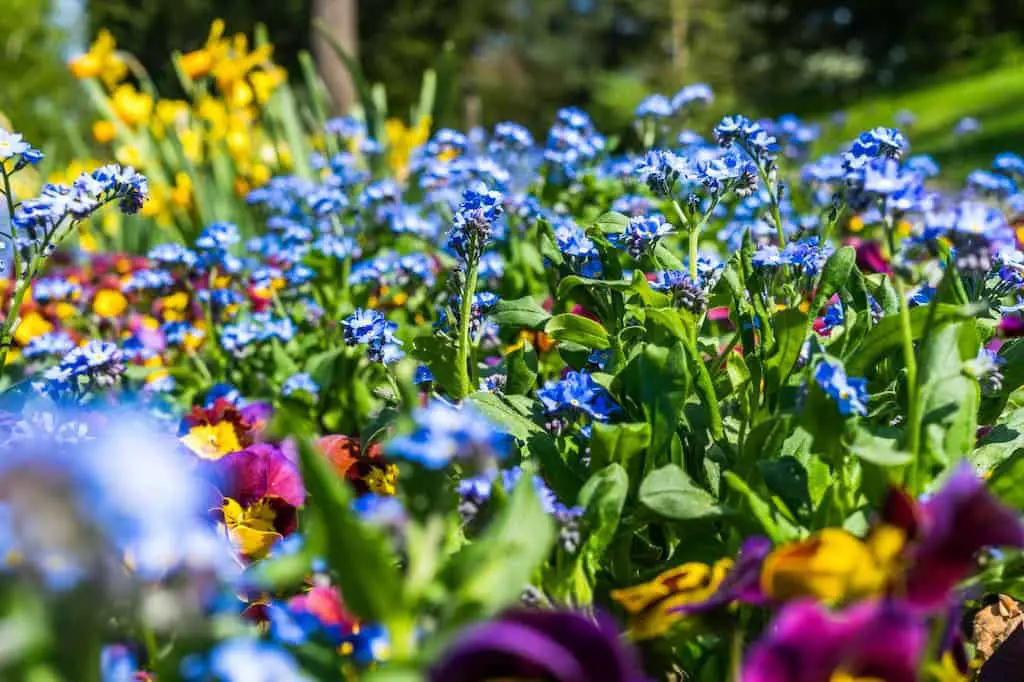
Plan for Continuous Blooms
This is the holy grail of landscape planting. Whenever I walk a property with a client, they inevitably say,” I would like it if I would have blooms all season.” This is not a bad goal, and in some parts of the world, it is no problem at all. Here in Wisconsin and many of the world’s colder areas, it is a real challenge.
This leads many people to choose their plants based on which ones look the prettiest and claim they will bloom at the correct time rather than which ones will survive in their yard. Bloom times claimed on plant labels are approximate and will not always be accurate every year. Plant blooms will change depending on many environmental factors.
To get the most out of your garden, always choose plants that are well suited to your hardiness zone and do your best to select a variety of plants and evenly spread the varying bloom time throughout the garden so that it is balanced for the entire season. You will never get it perfect the first time, so I would suggest planting rather sparingly, which will leave room for additions and changes as you learn how the plants grow and bloom in your yard under your conditions.
A Sure Thing
One sure way to ensure year-round blooms is to plant annual flowers. You can, of course, plant your entire garden in annuals and change it every year as you see fit. Or, you can plant a base structure of some of your favorite perennial choices and then leave open ground areas where you can choose and plant bunches of annual flowers every year to both change the look and to even out the desired year-round blooms.
Big Beds
If you are planting a huge bed, make it easy on yourself and create more visual interest by placing a few stepping stones or a pathway of wood chips. This will allow you to easily tend your garden, even on the wettest of days, and creates some structure and interest.
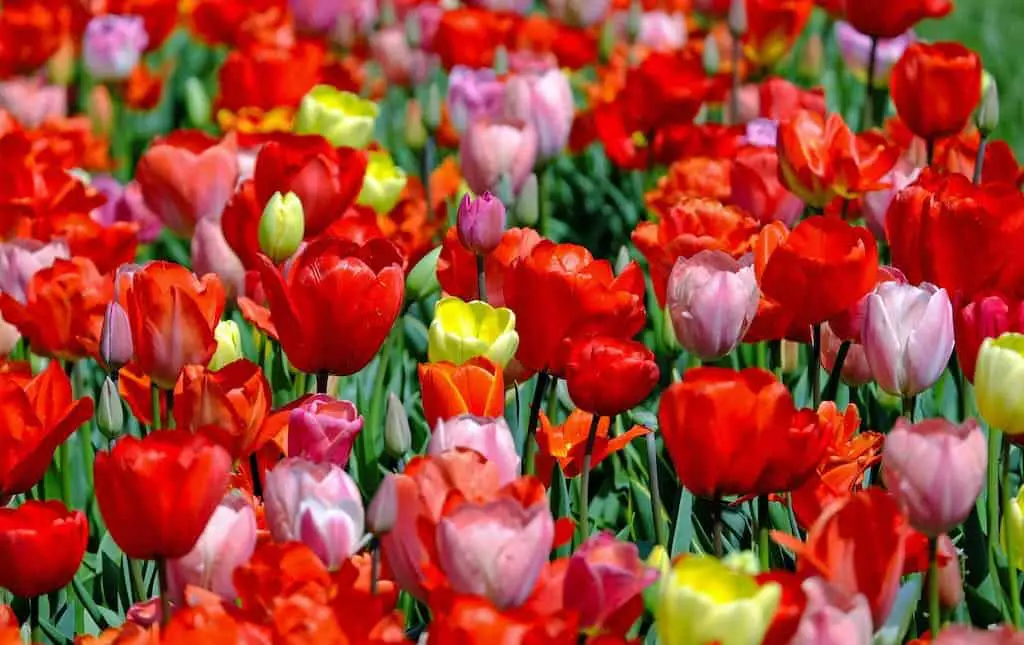
Perspective
When laying out your garden, regardless of size, consider your viewing perspective. If your bed is viewed from all sides, you will want to plant taller plants near the center and shorter plants near the edges. This will give you the best view from all sides. Alternatively, you can mound the ground in the center to allow you to lant same sized plants and still have a great view of all of the plants from all sides.
If your bed is along a lot line and will only be viewed from one side, plant the tallest plants at the rear and shortest in front. Berming can also be used in this instance if same-sized plants are desired.
You’ve Got Options
If your soil is rich and you plant the right plants for your garden conditions, you shouldn’t have to worry about using fertilizers in your garden. If you notice yellowing leaves, you can always add a bit of compost to your bed. Don’t be afraid to continue stacking your “lasagna” during the growing season. It will only help your garden this season and the seasons to come.
I understand that not everyone has enough time to create a proper and ongoing “lasagna’, so if you are in that group, you can amend your soil-building efforts with a bit of help. There are many organic fertilizer manufacturers, but be sure to read the labels carefully. Don’t just look at the large title; actually, read the fine print to ensure you are not bringing any hazardous chemicals you’re your environment.
If you decide to hire a professional, be very careful. Many contractors out there want to get the job but want to do it their way. The old chemical way is easier. It’s easier and cheaper to buy chemical treatments, and that is what they have been doing for years, so they are reluctant to change. I have seen contractors walk through a yard and discuss a project with a client, agreeing to all of the client’s requests and then doing it their way, regardless of the client’s wants.
Contractors like this do not deserve your business. If you are going to hire someone, make sure that your trust them, but do follow up. I have seen online ads entitled organic lawn treatments only to click through to their website to see nothing but chemical options and no talk of even considering organic alternatives.
If we are committed to organics, we need to be strong and confident in our decisions.
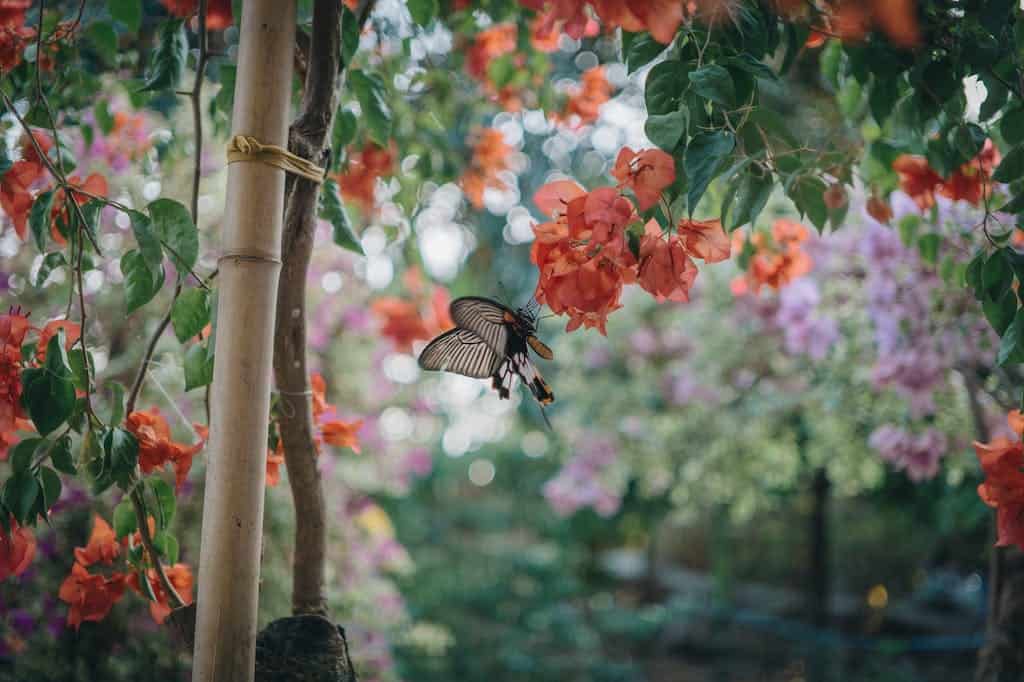
Seed or Transplant?
It doesn’t matter if you’re planting seeds or transplanting plants; both can work just fine in your new organic garden. The only downside to store-bought plants is that they have likely been grown and raised using chemical fertilizers. There are certified organic growers, but they aren’t as numerous, and you can expect to pay significantly more per plant because certification is difficult and more expensive for the growers. The seeds will be cheaper, but they need a little bit of patience from you. If you choose to plant seeds, choose non-GMO seeds that are organically certified, and have patience.
You may be able to find a good local gardener who grows organic. This would enable you to buy locally grown plants that have been raised in your local zone, which will make for a very stress-free transplant for the plant.
Organic Control of Pests
A healthy organic garden has a large insect population, most of which are beneficial. It is estimated that less than 10% of the insects in most gardens are harmful to the plants. A vigorous, healthy plant can usually combat pests without many problems.
Such a small pest problem certainly doesn’t require much of a response from us, and it certainly doesn’t warrant the use of hazardous synthetic pesticides.
Also, use caution; even if using organic pesticides, you must use great caution. Just because a pesticide is considered organic doesn’t make it safe. Organics pesticides can still kill or damage good and helpful insects like bees. You are usually better off ignoring a few pests and letting mother nature take care of them. If you use an organic pesticide, be sure to read the label and thoroughly research the product before using it in your garden. Also, be sure that you figure out whether you really Have a problem. The damage you see might be a monarch caterpillar eating the leaf of a milkweed plant, the food that it needs to become an adult butterfly.
If you have a pest problem, try to control pests naturally and organically by attracting and encouraging beneficial insects that feed on them. ““Natural enemies” such as ladybugs, predatory wasps, earmuffs, and killer bugs are natural pest control. Give these garden helpers the plants that they love, like Yarrow, Golden Rod, Sunflower, and Golden Alexander.
Conclusion
With some commitment, patience, and hard work, we can have a fabulous and self-sustaining organic flower garden. We can have all of the beautiful flowers and none of the hazardous chemicals. If more people committed to this gardening approach, our world would be a better and safer place.

